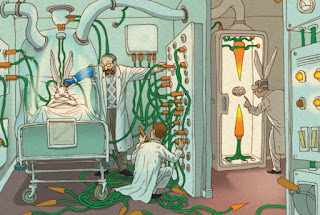Avatars are all
around us: they represent real people online and colonise new worlds in the
movies. In science, their role has been more limited. But avatars can be
extremely useful in linguistics, new research shows. Scientists from the Max
Planck Institute for Psycholinguistics use virtual avatars to investigate how
real people behave in interaction. The method makes it possible to study with
great precision how people adjust to each other in conversation. An exciting
question in psycholinguistics is how people adapt their speech to each other in
conversation. The research method of choice has long been the
"confederate": a conversational partner who, without the other
participant knowing, has been instructed to speak in certain ways. However,
some aspects of speaking cannot be studied in this way, for instance minute
changes in speech rate or intonation. Researchers have exchanged the human
confederate for a virtual reality avatar, opening up exciting new possibilities
for studying the dynamics of dialogue. To get around the problems of human
confederates, some studies have used pre-recorded sound files instead of
confederates. However, speaking to a sound recording can feel very different
from speaking in a face-to-face context, and indeed studies have shown that
language behaviour is different when interacting with a sound recording
compared to a video.
Researchers set
out to determine whether virtual reality could be used to combine the best of
the confederate and sound-only methods. Virtual reality makes it possible to
create a physical presence, an avatar, whose behaviour and speech patterns we
can control to the tiniest detail. Researchers decided to test the
effectiveness of this avatar using syntactic priming, a phenomenon in which
participants adapt their grammar usage to match that of the other. Because
syntactic priming is well understood, it provides the ideal testing ground for
an implementation using virtual reality. Recent work has suggested that the
degree to which people adapt can be influenced by their opinion of the person
they are interacting with. Researchers invited people to do a card game with
either a human confederate, a human-like avatar, or a computer-like avatar. The
two avatars looked identical and differed only in their behaviour: the
human-like avatar showed realistic facial expressions such as smiles, eyebrow
raises and eye contact, while the computer-like avatar had none of these. As
predicted, the human-like avatar worked just as well as the human confederate:
both resulted in the same amount of grammatical adaptation, whereas the
computer-like avatar did not. These results suggest that future conversational experiments
can use virtual reality avatars and investigate behaviour in ways that were
previously impossible.
More
information:




